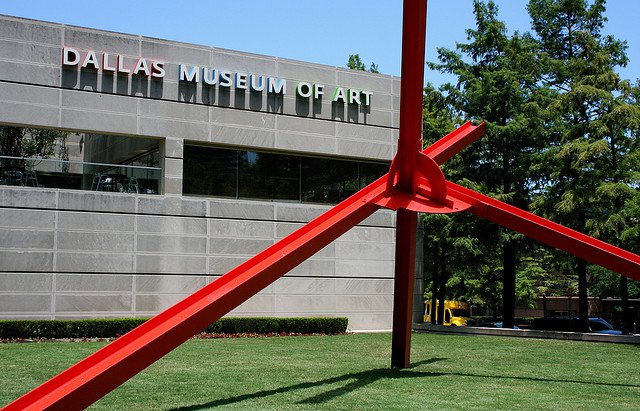I’ll be visiting five arts organisations (four museums and one tour company) in September 2016 as part of my Churchill Fellowship. I’d like to give a bit more information about each one and why I think their learning programmes, staff and organisational culture are particularly interesting.
First up – Dallas Museum of Art (DMA)
I first discovered DMA online about five years ago when I was looking for good examples of museums and galleries that were working towards being more visitor-focussed. DMA had just published Ignite the Power of Art, Advancing Visitor Engagement in Museums, the fruit of an extraordinary seven years’ (2003-2010) research into understanding audiences, their preferences for experiencing art, and utilising that understanding to run the organisation more effectively. I was immediately struck by the scale and ambition of such a project, as well as the depth of commitment from across the museum, including the director and trustees.
It’s also a cracking yarn – the story starts in the late 1990s, when the museum was facing declining revenues and had an annual attendance of 337,000, nowhere near its capacity. John R Lane was appointed The Eugene McDermott Director in 1999 and, alongside highly-respected educationalist, Deputy Director Bonnie Pitman (who went on to be Director from 2008-12), the focus of the museum shifted and steps were taken to address the “inhospitable” and “slightly depressing” perception of DMA held by Dallas locals.
In January 2003, DMA celebrated its centenary by remaining open for 100 consecutive hours and running an enormous programme of 150 events, including: tai chi; African American story-telling; a ballet performance; and Insomniac Tours. This marathon celebration was attended by 45,000 visitors and I can only imagine how exhausted the staff were by the end of it, but the whole experience clearly re-positioned the museum for audiences as the place to be. The years of audience engagement research that followed, led by research firm Randi Korn & Associates, Inc., resulted in the identification of four ‘visitor clusters’ and the creation of a Framework for Engaging with Art (FEA) that is the touchstone for all of the museum’s work. Full reports and more information on each of the six visitor studies conducted as part of their research can be found here.
And since then the DMA has gone from strength to strength:
- In 2008, the Centre for Creative Connections (C3) opened – a whopping 12,000sqft (1,100m2) of interactive gallery and learning environment;
- In 2010, annual audience figures reached one million for the first time;
- In 2012, under the directorship of Maxwell L. Anderson (2012-15) and led by Deputy Director, Robert Stein, the Laboratory for Museum Innovation was launched, with a focus on digital technologies;
- In 2013, free admission was reinstated, having been a charging museum since 2001;
- And in 2016, a stylish new digital art library opened, replacing the slide library.
NB – A fuller history of the museum can be found here.
With my much-dog-eared copy of Igniting the Power of Art in my little hand, I am really looking forward to seeing the legacy of this research six years on, how the museum and its learning offer continue to adapt and develop off the back of this approach, and the impact of engaging audiences via C3, with its focus on learning through doing. A recent blog post, capitalising on the new series of Games of Thrones, is titled Mother of Dragons, which hints at the warmth, fun and humour that comes across so strongly in their work shared online. I am really looking forward to sharing the learning to be had from this wonderful experiment in museum re-creation and can’t wait to see the programmes I’ve read so much about.

2 thoughts on “Intro 1: Dallas Museum of Art”